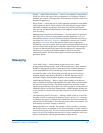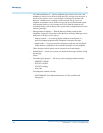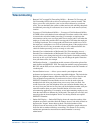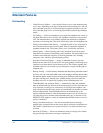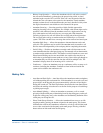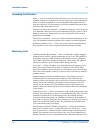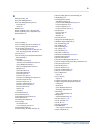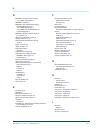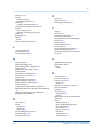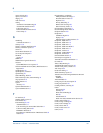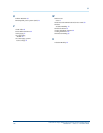
Attendant with DCS C
Overview for Avaya IP600 Internet Protocol Communications Server
555-233-001 — Issue 5 — November 2000
132
Attendant with DCS
• Control of Trunk Group Access — Allows an Attendant at any node in the
Distributed Communication System (DCS) to take control of any outgoing trunk
group at an adjacent node. This is helpful when an Attendant wants to prevent
telephone users from calling out on a specific trunk group for any number of
reasons, such as reserving a trunk group for incoming calls or for a very important
outgoing call.
• Direct Trunk Group Selection — Allows the Attendant direct access to an idle
outgoing trunk in a local or remote trunk group by pressing the button assigned to
that trunk group. This feature eliminates the need for the Attendant to memorize,
or look up, and dial the trunk access codes associated with frequently used trunk
groups. Direct Trunk Group Selection is intended to expedite the handling of an
outgoing call by the Attendant.
• Display — Shows call-related information that helps the Attendant to operate the
console. Also shows personal service and message information. Information is
shown on the alphanumeric display on the Attendant console. Attendants may
select one of several available display message languages: English, French,
Italian, or Spanish. In addition, your company may define one additional
language for use by users and Attendants on their display.
• Inter-PBX Attendant Calls — Allows Attendants for multiple branches to be
concentrated at a main location. Incoming trunk calls to the branch, as well as
Attendant-seeking voice-terminal calls, route over tie trunks to the main location.
• DCS With Reroute — Allows a DCS call to be rerouted over a different path if
the switch finds a better quality and lower cost route. Earlier versions of this
feature allowed for rerouting the call only after a transfer. With Release 9
enhancements, however, this feature now allows for rerouting during a call. DCS
With Reroute is similar to the rerouting capabilities used with QSIG.
• Italian DCS Protocol — Enhanced DCS adds features to the existing DCS
capabilities and requires the use of Italian TGU/TGE tie trunks. Additional
features include:
~ Exchanging information to provide Class of Restriction (COR) checking
between switches in the EDCS network
~ Providing call-progress information for the Attendant
~ Allowing Attendant intrusion between a main and a satellite PBX
~ Allowing a main PBX to provide DID/CO intercept treatment rather than the
satellite PBX



